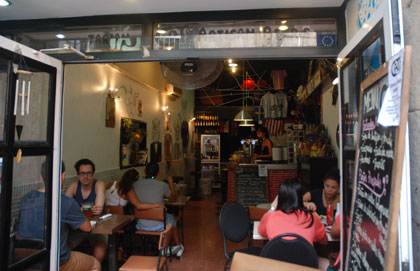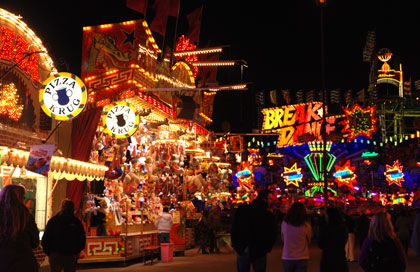
We can quit complaining now about how early some breweries rolled out their Oktoberfest beers.
Oktoberfest begins in Munich tomorrow. The Big One. About seven million people will visit during the next two weeks.
Oktoberfests across the U.S. during the next month (some even in October) will attract more in total. There’s something about them, don’t you think? Here in St. Louis, Urban Chestnut Brewing and Schlafly (Saint Louis Brewery) and hold their first co-celebration this weekend at Urban Chestnut. Next month’s Soulard Oktoberfest is the big one in these parts, with multiple tents, multiple bands (including once again Brave Combo, who seem to be on sort of an Oktoberfest trail), multiple vendors.
Beer is pretty much an essential element, although for years Cullman, Alabama, held a beer-free Oktoberfest.
Anyway, here are a few photos from when we visited the Cannstatter Volkfest in Stuttgart in 2008. Imagine the Wisconsin State Fair without the agricultural displays but a lot more beer. It’s billed as the second largest beer festival in the world, smaller than only Munich’s. As in Munich just a few local breweries sell beer. Unlike Munich, most are not beers available internationally, or even nationally. And the breweries offer more than a single festbier in their respective tents. You can cleanse your palate with a pils distinctively more bitter than you usually find nearby in Bavaria or choose a refreshing weisse beer to wash down typical Swabian dishes.
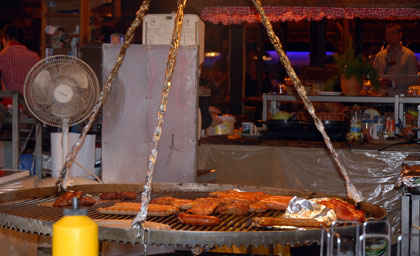
The festival began in 1818, occurs annually at about the same time as the Munich celebration, and attracts four million visitors over the course of two weeks. Three of the beer tents accommodate 5,000, and smaller ones pack in thousands. Outside food and crafts vendors share the midway with rides more impressive than those at the average U.S. state fair or seaside boardwalk, witness the photo at the top.
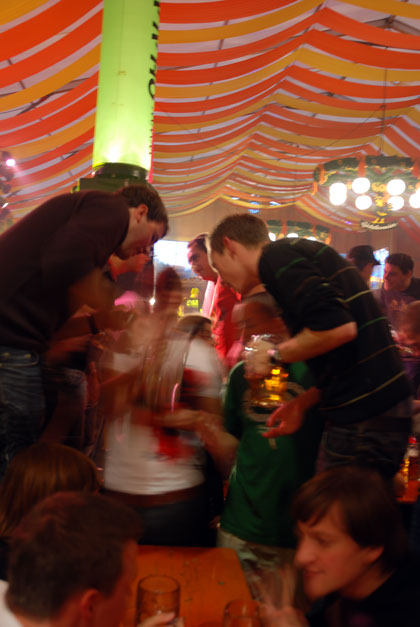
Those are young Germans — you know, the ones who no longer find beer relevant — standing on benches lining long beer tables, hoisting one-liter mugs, banging them together, singing along to songs like “YMCA” and boogying big time.
Earlier in the day we listened to brass bands like those you’d hear at Americanized Oktoberfest celebrations, playing traditional German tunes. After about every fourth song the afternoon bands stopped to sing “Ein Prosit” and lead thousands of revelers in a toast. Ohlala-Partyband, the group on the stage when the drinkers were on the benches, followed the same formula, but then quickly returned to belting out another pop song that doesn’t sound all that different in German.
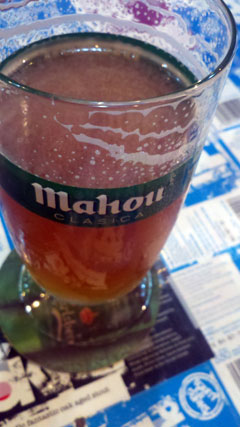 Starting from the bottom. The table is covered with labels from BrewDog Punk IPA bottles. There was a BrewDog beer on tap.
Starting from the bottom. The table is covered with labels from BrewDog Punk IPA bottles. There was a BrewDog beer on tap.